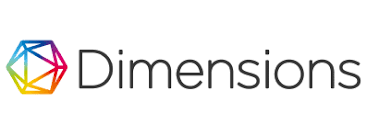Strategi Menggambar untuk Meningkatkan Kemampuan Long-Term Memory dalam Menghafal Istilah dan Definisi
Abstract
Full Text:
PDF (Bahasa Indonesia)References
Andrade, J. (2009). What does doodling do? Applied Cognitive Psychology, 24, 100-106.
Baddeley A. D., Eysenck M. W., Anderson M. C. (2009). Memory. New York: Psychology Press.
Baddeley, A. D. (2004). Memory and context. In R. L. Gregory (Ed.), The Oxford companion to the mind (2nd ed.). Ney York: Oxford University Press.
Baddeley, A. D. (2007). Working Memory, thoght, and action. United Kingdom: Oxford University Press.
Christensen, L. B. (2007). Experimental Methodology (10tn ed.). USA: Pearson.
Craik, F. I. M., Lockhart R. S. . (1972). Levels of processing: A framework for memory research. Journal of Verbal Learning and Verbal Behavior,, 11, 671–684.
D. Bui, M. McDaniel. (2015). Enhancing learning during lecture note-taking using outlines and illustrative diagrams. Journal of Applied Research in Memory and Cognition, 4(2), 129-135.
Einstein, G. O., & McDaniel, M. A. (2004). Memory fitness: A guide for successful aging. New Haven, CT: Yale University Press.
Fernandes, M. A., Wammes, J. D., & Meade, M. E. (2018). The surprisingly powerful influence of drawing on memory. Current Directions in Psychological Science, 27(5), 302-308.
Ganis, G., Thompson, W. L., & Kosslyn, S. M. (2009). Visual mental imagery: More than ‘‘seeing with the mind’s eye.’’ In J. R. Brockmole (Ed.). The visual world in memory, 211–249.
Horwitz, S. M. (2017). "Is Note-Taking More Effective with a Keyboard or a Pen?". Retrieved from https://scholar.colorado.edu/honr_theses/1369
Kosslyn, S. M., Ganis, G., & Thompson, W. L. (2010). Multimodal images in the brain. In A. Guillot & C. Collet (Eds.). The neurophysiological foundations of mental and motor imagery, pp. 3–16.
Longcamp, M., Boucard, C., Gilhodes, J., Anton, J., Roth, M., Nazarian, B., & Velay, J. (2008). Learning through Hand- or Typewriting Influences Visual Recognition of New Graphic Shapes: Behavioral and Functional Imaging Evidence. Journal Of Cognitive Neuroscience, 20(5), 802-815. doi:10.1162/jocn.2008.20504
Lotze, M., Erhard, K., Neumann, N., Eickhoff, S., & Langner, R. (2014). Neural correlates of verbal creativity: differences in resting-state functional connectivity associated with expertise in creative writing. Frontiers In Human Neuroscience, 8. doi:10.3389/fnhum.2014.00516
Matlin, M. W. (2013). Cognition (8th Ed). Wiley.
Mueller, P. A., & Oppenheimer, D. M. (2014). The pen is mightier than the keyboard: Advantages of longhand over laptop note taking. . Psychological science, 25(6), 1159-1168.
Nelson, D. L. (1979). Remembering picturesand words: Appearance, significance, and name. In L. S. Cermak & F. I. M. Craik (Eds.),. Levels of processing in human memory, 45-76.
Paivio, A., & Csapo, K. (1973). Picture superiority in free recall: Imagery or dual coding?. Cognitive Psychology, 5, 176–206.
Polit, D., & Beck, C.T. (2006). The Content Validity Index: Are You Sure You Know What’s Being Reported? Critique and Recommendations. Research in Nursing & Health, 29, 489–497.
Reed, S. K. (2010). Thinking visually. New York: Psychology Press.
Roediger, H. L., III, & Guynn, M. J. (1996). Retrieval processes. In E. L. Bjork & R. A. Bjork (Eds.). Memory, 197–236.
Sari, R. R. (2018). Mnemonik Sebagai Alternatif dalam Menghafal Kosakata Bahasa Arab. Tarbiyatuna: Jurnal Pendidikan Ilmiah, 3(2), 30-50.
Saylor Academy. (n.d.). Introduction to Psychology. Retrieved from https://courses.edx.org/c4x/SMES/PSYCH101x/asset/Introduction_to_Psychology-Ch._8.pdf
Schwartz, B. L. (2011). Memory: Foundations and applications. Thousand Oaks, CA: Sage.
Sumrall, W., Sumrall, R. & Doss, A. D. (2016). A Review of Memory Theory. International Journal of Humanities and Social Science, 6(1).
Van Meter, P., & Garner, J. (2005). The promise and practice of learner-generated drawing: Literature review and synthesis. Educational Psychology Review, 17, 285–325.
Wammes, J. D., Meade, M. E., & Fernandes, M. A. (2018). Creating a recollection-based memory through drawing. Journal of Experimental Psychology: Learning, Memory, and Cognition, 44(5), 734.
Wammes, J. D.-1. (2017). Learning terms and definitions: Drawing and the role of elaborative encoding. Acta psychologica, 179, 104-113.
Weldon, M. S., Roediger, H. L., & Challis, B. H. (1989). The properties of retrieval cues constrain the picture superiority effect. Memory & Cognition, 17(1), 95-105.
DOI: http://dx.doi.org/10.24014/jp.v16i1.9435
Refbacks
- There are currently no refbacks.
REDAKSI : JURNAL PSIKOLOGI
Jl. H.R. Soebrantas Km. 15.5 No. 155,
Gedung Fakultas Psikologi UIN Sultan Syarif Kasim Riau
Kel. Tuahmadani, Kec. Tampan, Pekanbaru – Riau 28293
1.jpg)
.jpg)














